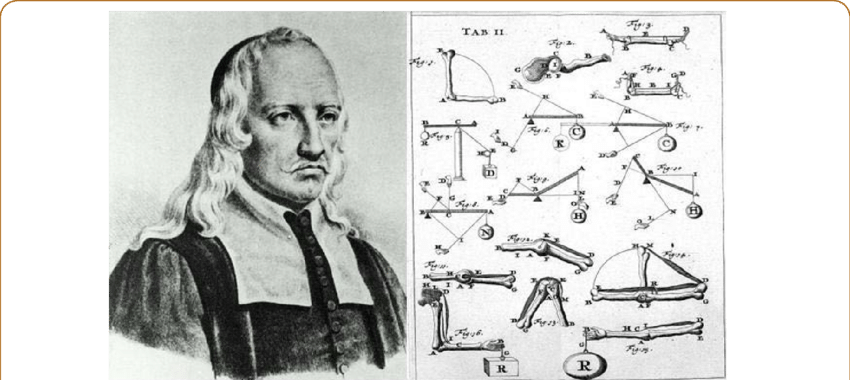He developed the physical laws of the movements of the human body: who is Giovanni Alfonso Borelli?
The 17th-century French philosopher and mathematician Rene Descartes thought that the human body was a machine. Borelli was the first person to approach the activities of the organism with a brand-new thinking system.

(1608-1679) Italian physicist, and physiologist. He developed the physical laws of the movements of the human body. Giovanni Francesco Antonio Alfonso Borelli was born in Naples on January 28, 1608. His father was a Spanish soldier stationed in Naples. It is not known whether he studied medicine in his younger years or not. Borelli, who studied mathematics in Rome, became a professor of mathematics in Messina in 1649 and in Pisa in 1656. He returned to Messina in 1667, where he went to Rome in 1664, where he lived under the tutelage of Christina, the former queen of Sweden. Borelli completed his most famous work, De Motu animalium ("On the Movements of Animals") in 1680-1681. In addition to physiology, he also made discoveries in mathematics and astronomy. The idea of a parabolic orbit was first introduced by Borelli in a work published under a pseudonym in 1665. Borelli, who was also a friend and collaborator with Malpighi, died in Rome on 31 December 1679.
Giovanni Alfonso Borelli (28 January 1608 – 31 December 1679) was a Renaissance Italian physiologist, physicist, and mathematician. He contributed to the modern principle of scientific investigation by continuing Galileo's practice of testing hypotheses against observation. Trained in mathematics, Borelli also made extensive studies of Jupiter's moons, the mechanics of animal locomotion, and, in microscopy, the constituents of blood.
The 17th century, in which Borelli lived, was a turning point in which intense efforts were made to find solutions to the various problems faced by medicine in practice. The 17th-century French philosopher and mathematician Rene Descartes thought that the human body was a machine. Descartes, who can be considered one of the earliest representatives of mechanisms in medicine, was of great importance because he approached the activities of the organism with a brand new thinking system for the first time, although it contained important errors. In this period, a group of scientists called iatrochemists, pioneered by Van Helmont and Sylvius, who suggested that man himself can be understood through the laws of nature, evaluated life as a process consisting of a series of chemical reactions, while others emphasized that life itself can be understood with a careful application of mathematics. they had taken a step. Borelli, who closely followed this view, known as the latrophysics School, and aimed to bring radical innovations in medicine by combining physics and physiology, tried to explain muscle movements and other movements of the human body according to the laws of statics and dynamics. Sanctorius, who was the representative of the latrophysics view in medicine before Borelli, had done pioneering studies on what is now called metabolism. Borelli developed this view further and tried to explain the functioning of the various organs he examined, from the kidneys to the heart, with physicochemical processes.
In addition to his contributions to medicine and his work on geometry, Borelli proposed the law of the rise of liquids in capillaries in physics and tried to explain the motions of celestial bodies in astronomy by gravitational force. His work in astronomy was particularly influenced by the comet he observed in 1664. Borelli concluded that this comet, which he watched until the beginning of 1665, changed its distance from the Earth, that the comet was far from the Moon and was traveling on a parabola instead of a straight line. This result also contradicted the competing views of Ptolemy, Brahe, and Kepler regarding the motions of the celestial bodies. Borelli, who was also aware of the problems faced by Galilei, in this case, made his observations under the pseudonym Pier Maria Mutroli to a friend who was a professor of mathematics in Padua, Del movimento della cometa apparsa il mesdi decembre, 1664 (“On the Motion of the Comet Seen in December of 1664”). He chose to publish it in the form of a letter entitled . Later, he examined the moons of Jupiter and gave an explanation for the elliptical orbits of the planets in his work Theorica e mediceorum platietarum ex causis physicis deduetae, which he published in 1666.
